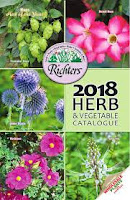Shrubs Prune and Rejuvenate

15-feet tall Burford Holly shrubs This is an ideal time of year to prune shrubs either to reshape, clean up or completely rejuvenate them. Rejuvenation or renovation pruning can mean taking shrubs completely to the ground or just above the ground. When done to healthy shrubs, they will quickly grow from the stump and via new stems. The Burford Holly shrubs in front of our house began as one-gallon container size from Lowe's. They were precisely planted the same distance apart and allowed to grow there with minimal trimming for 16 years. Now they are 15-feet tall and 20-feet wide. Since they are evergreen, they are a great privacy screen from the dog walkers, bicycle walkers, cars and pedestrians. In addition, I can sit on the screened front porch in privacy. However, they've reached a point where they have to be rejuvenated: They are too big for their space, too tall to top prune and have almost leaves inside their woody structure. Not all shrubs are amenable to ...



